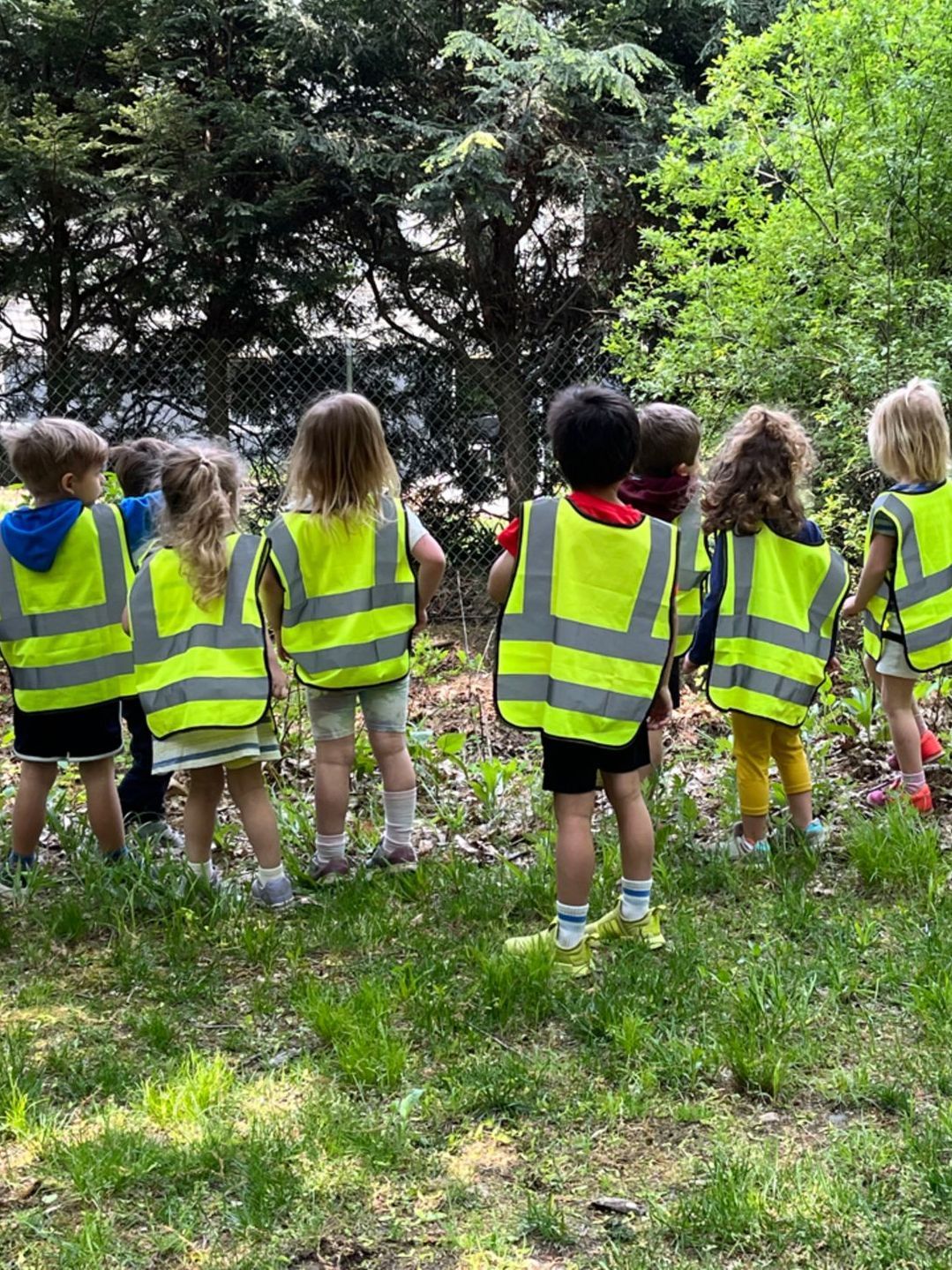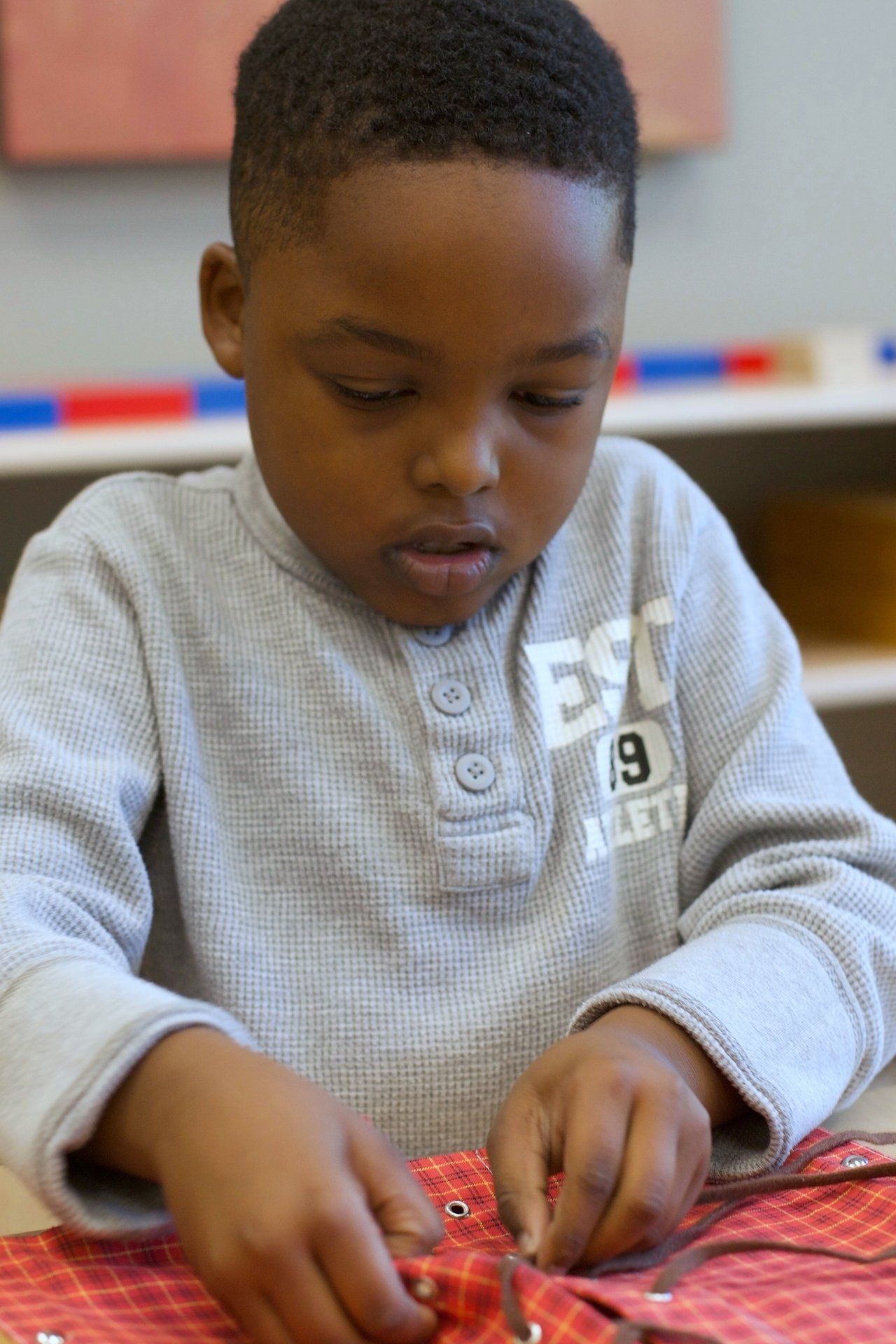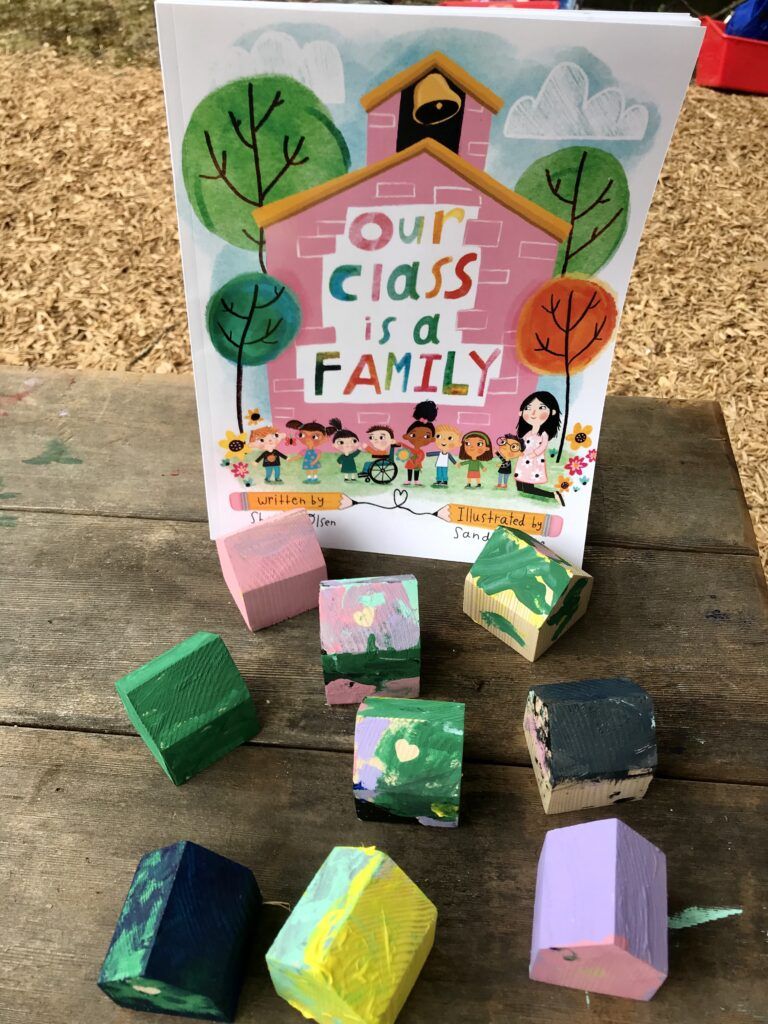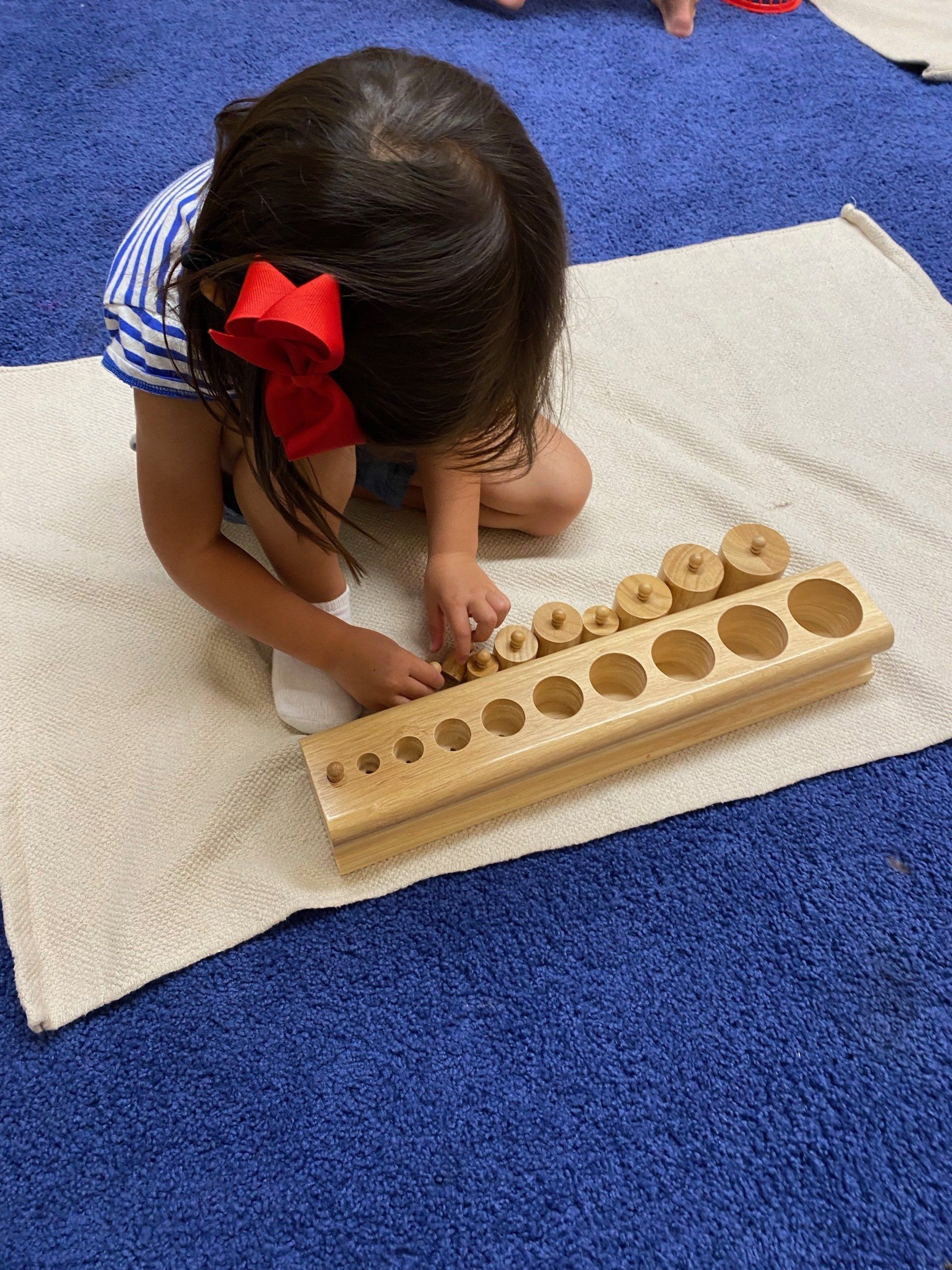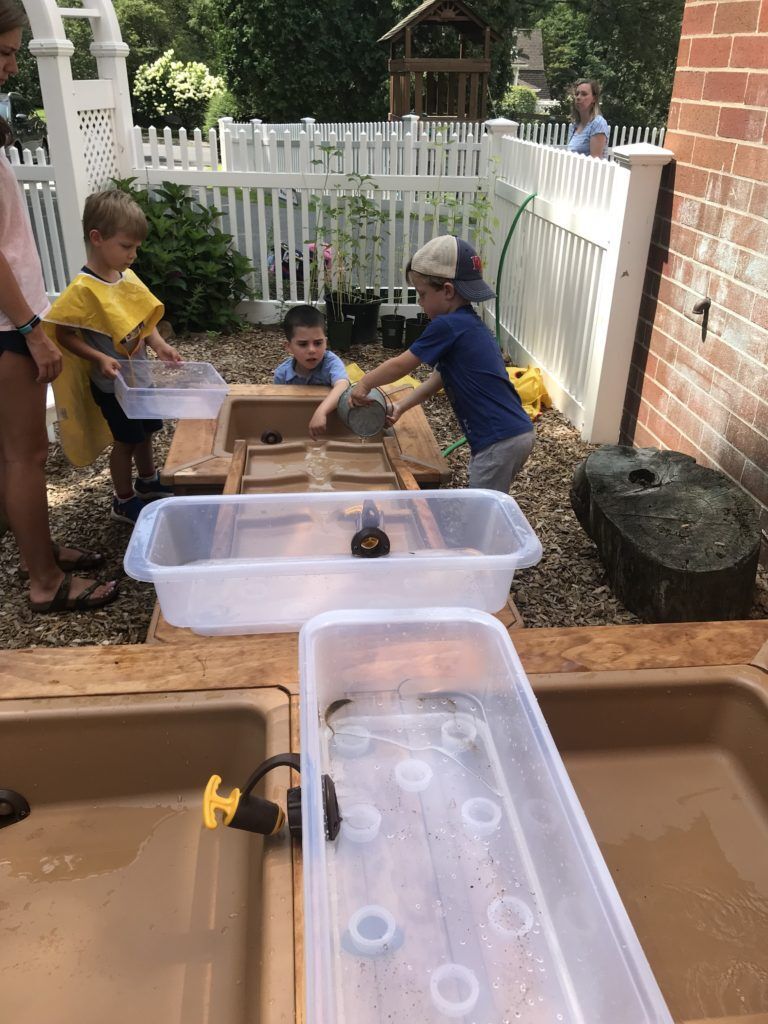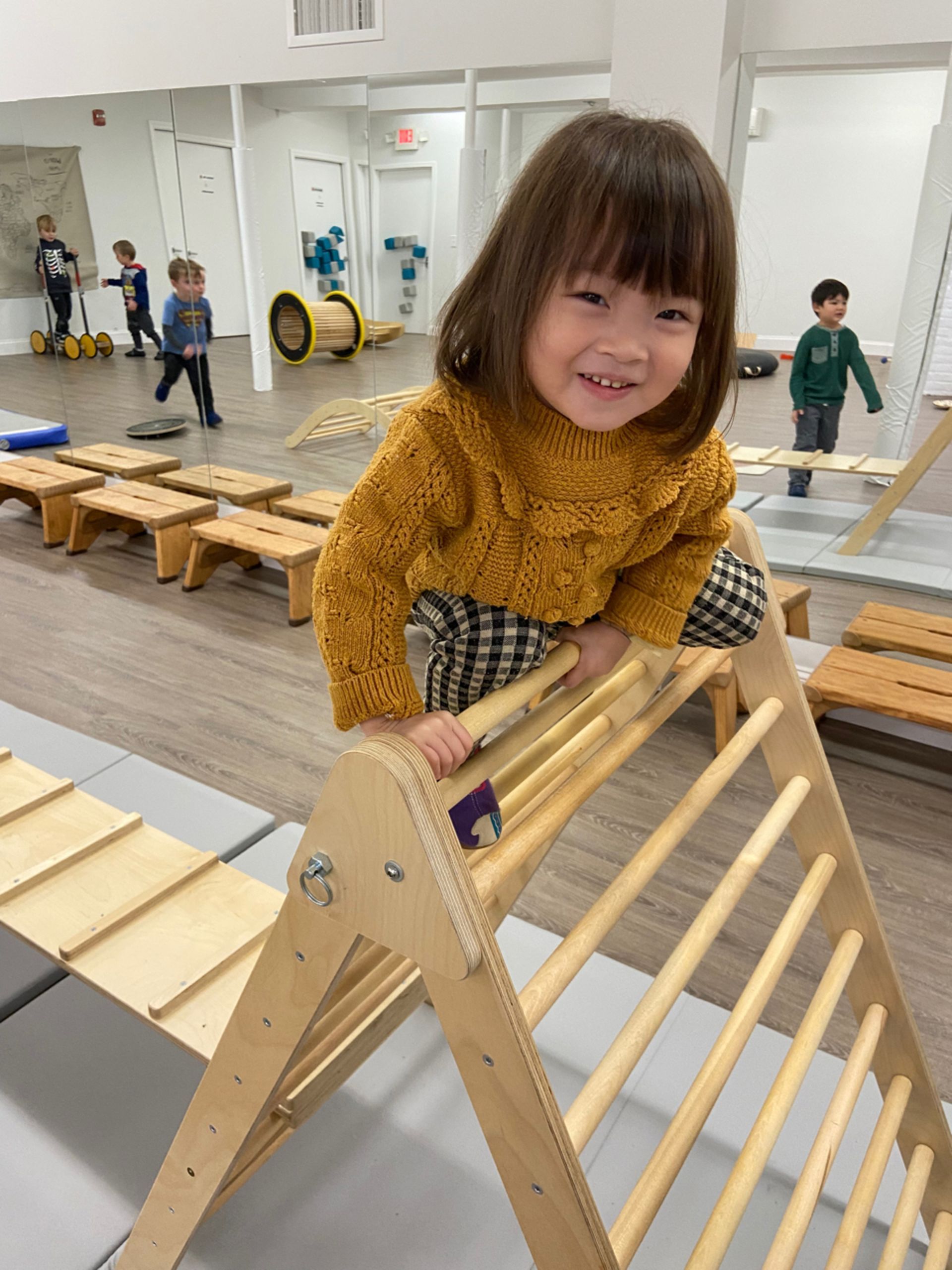Curriculum
Outdoor Classroom/Nature Study
“How often is the soul of man – especially in childhood – deprived because he is not allowed to come in contact with nature.“
-Maria Montessori
Today children need nature more than ever. Richard Louv, author of Last Child in the Woods, asserts that “direct exposure to nature is essential for healthy childhood development — physical, emotional, and spiritual. Even creativity is stimulated by childhood experiences in nature.”
In our outdoor classroom and on nature walks along the brook path, children seem calm and content while demonstrating a sense of awe and discovery. Our students and teachers benefit greatly from having so many beautiful outdoor spaces to explore.
Everyday Living
Developing new skills that will help children become confident and independent happens daily in the practical life section of our classrooms. Children get basic lessons on things such as pouring, spooning, scooping, tonging, etc. They also learn more advanced activities like hand washing, polishing, flower arranging, food preparation, and gardening. Other goals of the Practical Life curriculum include developing a sense of order and improving coordination as well as strengthening fine motor skills. Children are drawn to all the lovely, child size materials and are free to explore in an unhurried way. Many of the skills they learn in this area set the foundation for learning in all other areas. For example, remembering the eight steps involved at the hand washing table from putting on a smock to pouring out the used water may help a child learn to complete step by step directions which they will need to do later when working on lengthy math problems. Most of the activities (which we call “works” in the Montessori classroom) require using a pincer grip which helps strengthen hand muscles for writing. You might say we have a lot of “hidden agendas” in that the children don't know all about the many benefits of Montessori learning, they just do what they do because it is fun and purposeful!

Math
Learning math comes much easier when using concrete Montessori materials that physically show the process of solving math problems.
The beautiful materials are very attractive and children love working with them. Hands on work prepares children to do math that progresses to different levels of abstraction as they are ready.
Montessori lessons provide children with a strong foundation in mathematics and geometry.
“The Hands are the instruments of Man's Intelligence.“
-Maria Montessori
Geography/Culture
Teaching children about geography helps children learn their place in the world and helps them become aware and accepting of other cultures.
As in all areas of Montessori, children learn through hands on activities in the environment and through engaging presentations. Cartography is an important part of the curriculum and there is no comparison to the beauty and function of the Montessori geography materials.
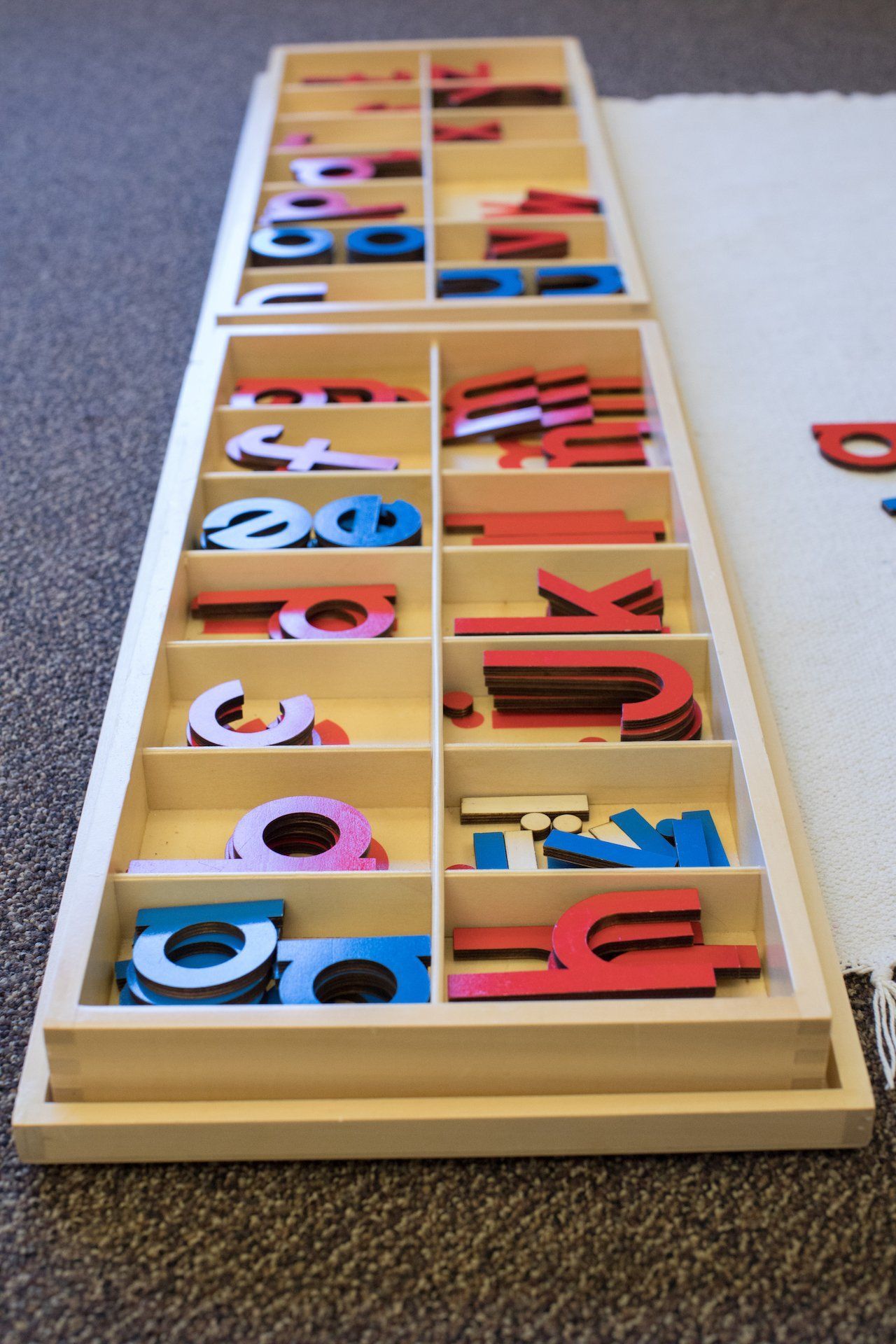
Language Arts
Maria Montessori wrote that from birth to age six, children are in their sensitive period for language. Sensitive periods are crucial times during a child's development. With heightened sensitivity to the sights and sounds around them, children are able to learn to speak and eventually read and write. At Montessori Day School even our youngest learners receive lessons in phonics and use beautiful Montessori materials that get them excited about developing their language skills. In our mixed age classes, younger children see what older students are doing and are naturally motivated to do the same. Children are not limited to certain activities because of their age.
In addition to traditional Montessori handwriting materials, our students are introduced to the Handwriting Without Tears program which is a whole sensory approach to learning letters and numbers. Children like it because it includes fun activities like making the shapes of letters or numbers with play dough, singing letter songs, building letters with lines and curves made out of wood, and so much more.
Children's literature is a big part of our program and we find the very best books to read at circle time and to put in our classroom libraries. We LOVE books!
Creative Arts
“Every child is an artist.
The problem is how to remain an artist once we grow up.“
-Pablo Picasso
MDS teachers believe children need art and should have access to engaging art materials and projects every day. Our art curriculum includes developing basic art skills, exploring with different mediums and techniques, and learning about famous artists and their works. At the end of the school year some of the children's masterpieces are displayed at our annual Art Show and Grandparent's Day.
Children also need music and one way that we foster a love of singing and making music is through our music classes. We offer an extraordinary music program designed specifically for our students. We have music specialists who visit the classrooms regularly. The children love the songs they learn and can often be heard singing them throughout the day.
Other popular creative arts activities include writing stories and poems, presenting puppet shows, acting, and dramatic play.
Sensorial
Awakening the child's senses is one goal of the sensorial materials. The curriculum is designed to help children fully engage with the world around them. Early works involve objects that vary by one property such as color, texture, or size. They also may isolate the senses in that a work may primarily involve the use of one of the five senses. For instance children may take turns wearing a blindfold when tasting different kinds of apples. Children may do a similar activity when smelling fresh herbs and matching them with dried herbs in bottles. Language is incorporated into sensorial exercises when children use words to describe what they are experiencing.
Sensorial works also encourage problem solving, creativity, concentration, and cooperation.
Science
Children are naturally curious and one goal of our science studies is to cultivate their curiosity and interest in the world around them. By giving brief lessons and hands-on experiments children are able to take part in answering their own "why" questions.
Thematic units that are introduced across the curriculum include: animals of the seven continents, the science of seasons, space, dinosaurs, and much more. The choice of units to study in any given year are often guided by the interest of the children.
Playground/P.E./Movement Room
At Montessori Day School, children go outside from thirty to forty-five minutes every day. There are many different ways to develop gross motor skills on our school playground as well as opportunities to engage in imaginative play with friends. In the spring and fall we enjoy walking to a nearby park. If the weather keeps us inside, the children participate in creative movement or yoga sessions or spend time in our movement room. We also enjoy special lessons in dance, gymnastics, or badminton during the winter months.
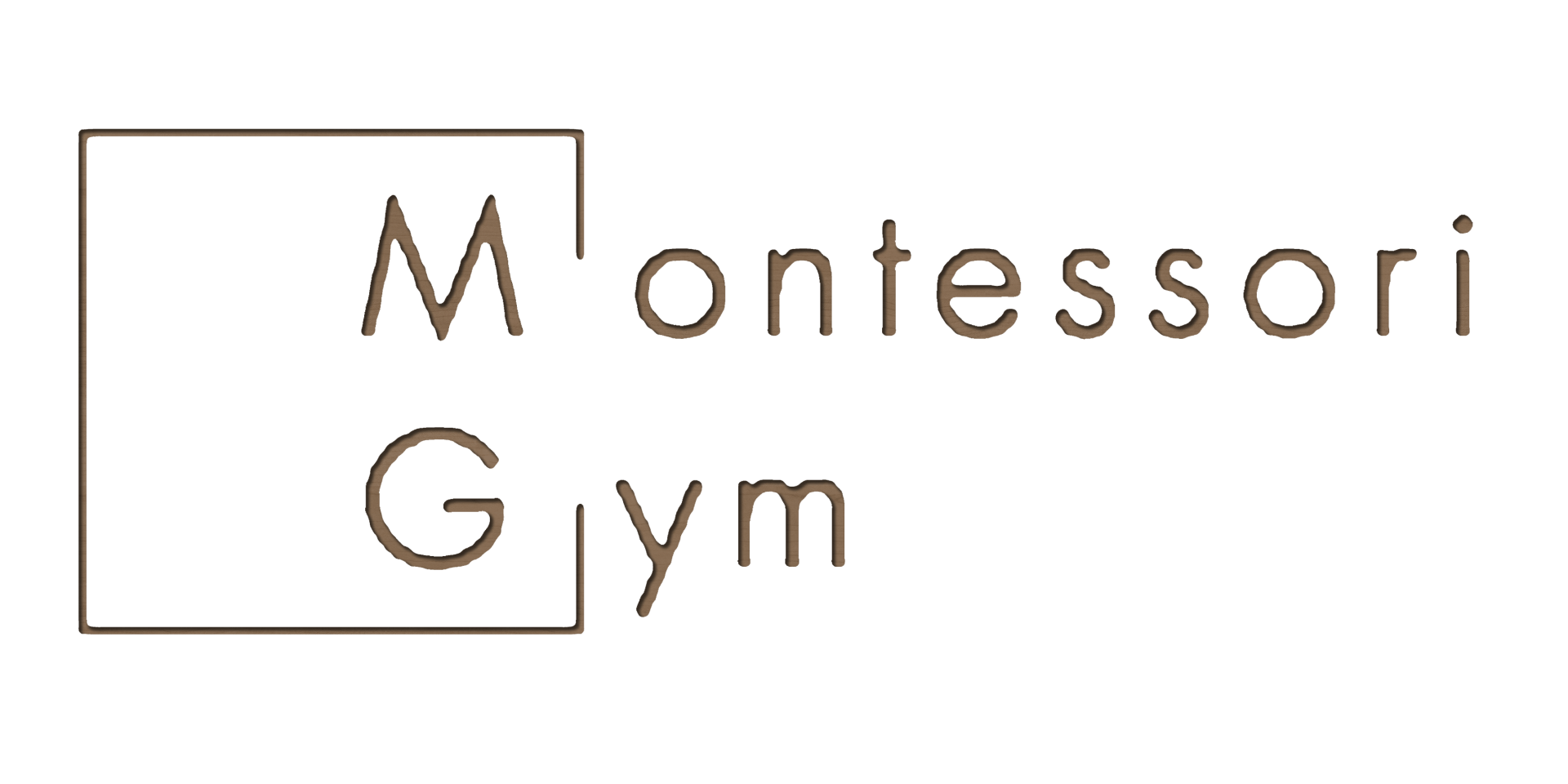
LEARN MORE
Montessori Day School of Wellesley Hills
40 Abbott Road
Wellesley Hills, MA 02481
(781) 795-5571
Montessori Day School of Wellesley Hills
Montessori Day School of Wellesley Hills

